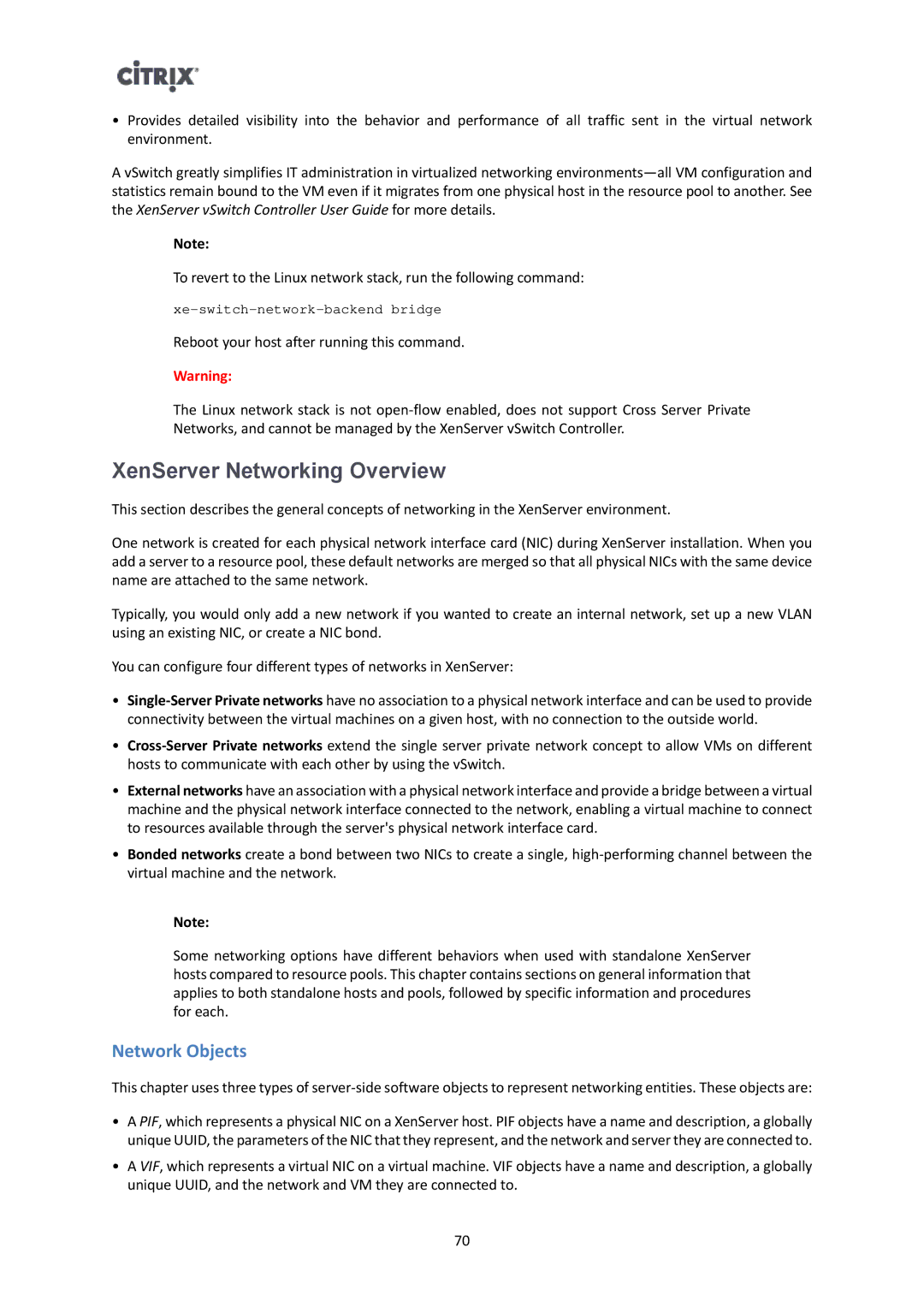•Provides detailed visibility into the behavior and performance of all traffic sent in the virtual network environment.
A vSwitch greatly simplifies IT administration in virtualized networking
Note:
To revert to the Linux network stack, run the following command:
Reboot your host after running this command.
Warning:
The Linux network stack is not
XenServer Networking Overview
This section describes the general concepts of networking in the XenServer environment.
One network is created for each physical network interface card (NIC) during XenServer installation. When you add a server to a resource pool, these default networks are merged so that all physical NICs with the same device name are attached to the same network.
Typically, you would only add a new network if you wanted to create an internal network, set up a new VLAN using an existing NIC, or create a NIC bond.
You can configure four different types of networks in XenServer:
•
•
•External networks have an association with a physical network interface and provide a bridge between a virtual machine and the physical network interface connected to the network, enabling a virtual machine to connect to resources available through the server's physical network interface card.
•Bonded networks create a bond between two NICs to create a single,
Note:
Some networking options have different behaviors when used with standalone XenServer hosts compared to resource pools. This chapter contains sections on general information that applies to both standalone hosts and pools, followed by specific information and procedures for each.
Network Objects
This chapter uses three types of
•A PIF, which represents a physical NIC on a XenServer host. PIF objects have a name and description, a globally unique UUID, the parameters of the NIC that they represent, and the network and server they are connected to.
•A VIF, which represents a virtual NIC on a virtual machine. VIF objects have a name and description, a globally unique UUID, and the network and VM they are connected to.
70
